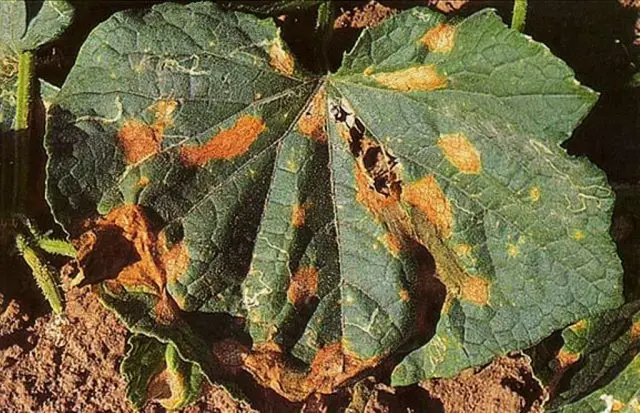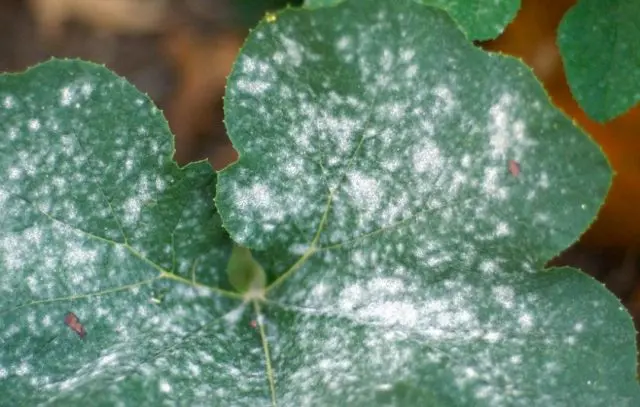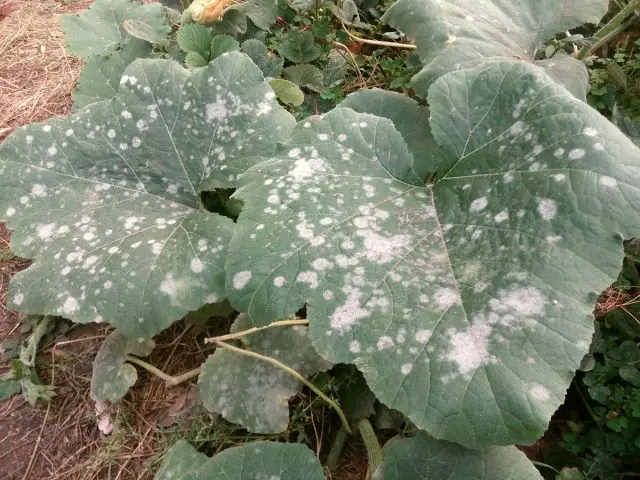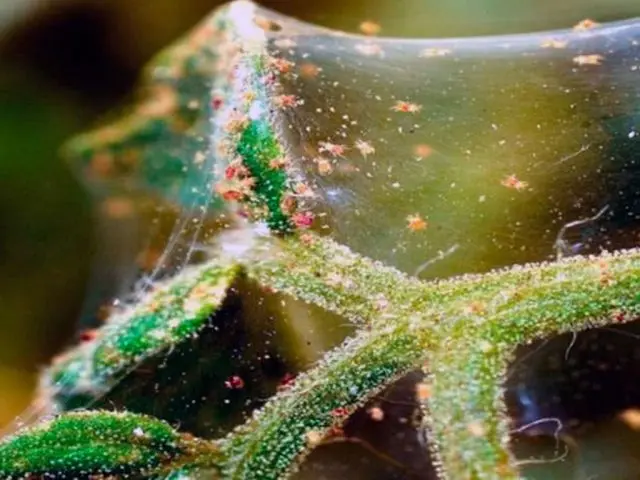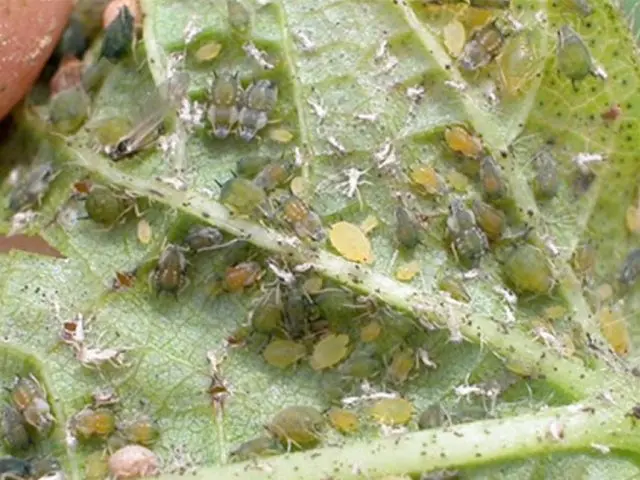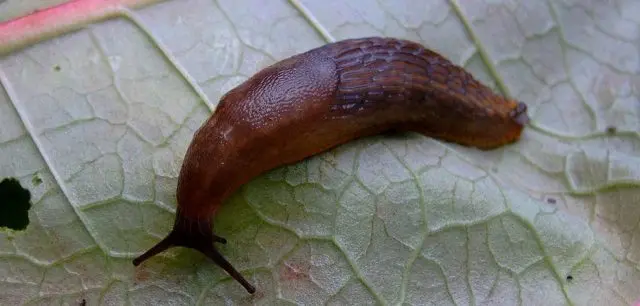Contents
Pumpkin Marble is an old, well-known variety that is grown throughout Our Country. The variety gained its popularity for its good taste and stable, high yield. Thanks to its juicy, sweet pulp, Marble gourd is widely used in cooking. But in order to achieve the expected result when growing a variety, it is necessary to follow agrotechnical rules.
Description of pumpkin Marble
Marble gourd is a late-ripening variety presented by Biotekhnika agricultural firm. Fruiting occurs 140 days after planting seeds. The culture is large-fruited, rapidly growing. The plant forms powerful, long lashes, covered with large undissected dark emerald leaves. In early summer, large bright yellow flowers appear on the plant, attracting pollinating insects.
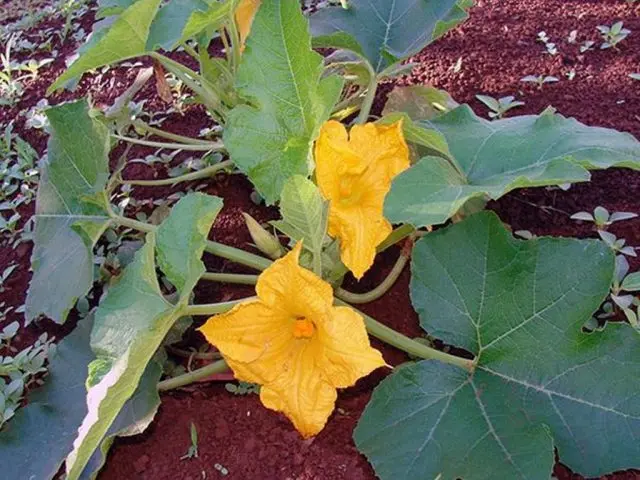
Description of fruits
The fruits of large-fruited Marble pumpkin are flattened, with a wrinkled, dark emerald, soft skin. Sometimes light gray streaks and specks appear on the surface, thanks to which the variety got its name.
Fruits are large, reach from 6 to 10 kg. The pulp is bright orange, dense, fragrant, with a delicate texture. Seeds 3 cm long are cream colored. The fruit has a balanced useful composition. The pulp contains 13% sugar, carotene, potassium, magnesium, vitamins A, B and E.
Due to the light nutmeg aroma, soups, snacks, sauces, casseroles, juices are prepared from the fruits. Marble pumpkin is suitable for freezing and preparing winter preservation. A dense peel allows you to maintain freshness and aroma for a long time, but, as gardeners note, taste qualities decrease after long-term storage.
Characteristics of a variety
Marble pumpkin, according to reviews and descriptions, is frost- and drought-resistant. But it is recommended to grow it in the southern regions, since in a cold climate the taste characteristics of fruits decrease, sugar content disappears, and the pulp acquires a loose texture. Pumpkin Marble is a high-yielding variety, subject to agrotechnical rules from 1 sq. m you can collect about 20 kg of fruit.
Pest and disease resistance
According to the description, reviews and photos, the marble gourd is not a capricious and pampered culture. But if the rules of care are not followed, the fruits can be seriously affected by many diseases and pests. Most often, Marble gourd suffers from powdery mildew, white and root rot, and bacteriosis. Of the pests for the Marble pumpkin, the following are dangerous: spider mites, melon aphids, slugs. In order not to lose the long-awaited harvest, it is necessary to start treatment in a timely manner, view photos of common diseases and pests of the Marble pumpkin variety and take preventive measures.
- Bacteriosis. The disease can be recognized by irregularly shaped dark emerald spots that are located between the veins on the leaf plate. Without treatment, the spots turn brownish-brown, dry out, forming irregularly shaped holes. Treatment consists in removing the affected areas and spraying the plant with copper-containing preparations.

- Mučnistaâ rosa. The leaves are covered with snow-white spots, which eventually occupy the entire area of uXNUMXbuXNUMXbthe leaf plate. You can help the Marble pumpkin by treating it with Topaz or a solution based on colloidal sulfur.

- White rot. The fungus infects the entire aerial part, covering it with a flocculent coating. Infected areas soften and become slimy. The disease spreads rapidly at high humidity and low air temperature. When the first signs appear, Marble gourd is treated with 0,5% copper sulphate.

- spider mite. The pest can be recognized by the thin web on the leaf. The insect sucks the juice from the plant, as a result of which yellow spots appear on the leaf, it dries up and falls off. To kill the tick, onion or garlic alkaline infusion or broad-spectrum insecticides are used.

- Melon Caviar. A colony of pests settles on the inside of the leaf, ovaries and buds. The aphids feed on plant sap. When infected, the leaf plate curls, the flowers fall off, the pumpkin stops growing and developing. Aphids not only reduce yields, but are also a carrier of many diseases. To get rid of aphids, Marble pumpkin is sprayed with insecticides, onion infusion or a decoction of phytoncidal herbs.

- Slugs. Voracious insects eat leaves, flowers and ovaries in a short time. Folk remedies are used to kill slugs: traps are made from cabbage leaves and a wet rag, the soil is sprinkled with ash, pepper or tobacco, the plant is sprayed with an infusion of tomato leaves, garlic or wormwood.

In order not to face serious problems, not to lose the Marble Pumpkin and to collect a decent harvest, you need to carry out preventive measures:
- to observe a crop rotation;
- remove weeds in a timely manner;
- carry out seed treatment;
- not to thicken the landing;
- timely remove infected foliage and fruits;
- in order to increase immunity, do regular top dressing with complex mineral fertilizers.
Advantages and disadvantages
Reviews and photos of Marble pumpkin varieties indicate the positive characteristics of the variety. The pluses include:
- large-fruited;
- good taste;
- long keeping quality;
- unusual marble color;
- not prone to cracking even under adverse climatic conditions;
- long-term transportability.
Despite the large number of positive qualities, Marble pumpkin also has disadvantages:
- does not develop well in a shaded area;
- regular feeding is necessary;
- does not tolerate drought and low temperatures.
Cultivation technology
Marble pumpkin is a late-ripening variety, when grown in regions with a short, cool summer, the crop does not have time to ripen, so it is suitable for southern cities with a warm climate.
Marble pumpkin seeds are planted in well-warmed, nutritious soil. The bed for planting is prepared in the fall. The earth is dug up and seasoned with rotted compost or manure.
A sunny, draft-free area is chosen for planting. In the spring, the bed is dug up and fed with phosphorus-potassium fertilizers. If the soil is alkaline and with high acidity, lime or wood ash is added when digging.

2 days before sowing, seeds are prepared:
- 12 hours heated at a temperature of + 40 ° C;
- soak overnight in an ash solution (2 tablespoons of ash per 1 liter of warm water);
- before planting, the seeds are dried.
Marble pumpkin seeds have a high germination rate, so they are planted without prior germination. Landing steps:
- On the prepared bed, holes are made 5-6 cm deep, at a distance of 0,5-1 m.
- The landing pit is shed with 2 liters of hot water.
- After absorbing moisture, 2-3 seeds are laid out in each well.
- Seeds are covered with fertile soil, the earth is mulched.
After 2 weeks, under favorable climatic conditions, shoots appear. When the Marble Gourd is 1 month old, weak shoots are removed, leaving the healthiest and strongest. In order to avoid damage to the root system, excess seedlings are not pulled out, but cut off with a sterile pruner.
To grow a rich crop of Marble pumpkin, it is necessary to carry out timely care, which consists in watering, fertilizing and weeding.
For good growth of stems and fruits, the Marble Gourd needs regular and plentiful watering. After germination, irrigation is carried out 3-4 times a week. The grown pumpkin is watered after the top layer of the earth dries out, spending at least 5 liters of warm, settled water under each bush. In order not to join fungal diseases, irrigation is carried out strictly under the root, trying not to get on the leaves.
After watering, shallow loosening, weeding and mulching are carried out. Mulch will save you from weeds, retain moisture and feed the plant with microelements. Weeding saturates the soil with oxygen, which favorably affects the growth of pumpkins and is a preventive measure against many diseases.
Pumpkin Marble will bear fruit well only on fertile soil. The first feeding is applied 1,5 months after planting the seeds. As top dressing, bird droppings or slurry diluted in a ratio of 1:10 are used. During flowering and fruiting, phosphorus-potassium fertilizers are used. They can be applied throughout the growing season with an interval of 10-15 days.
After 140 days, after planting the seeds, they begin to harvest. The degree of maturity is determined by the following factors:
- leaves wither;
- the stalk dries up and stiffens;
- the peel acquires a varietal color.
It is impossible to delay the collection of Marble pumpkin, as the slightest frost can reduce taste and shorten the shelf life. A warm, sunny day is chosen for fruit picking. For storage, choose whole, intact vegetables, cut together with the stalk.
Before cleaning for storage in a dark, cool room, the pumpkin is not washed or cleaned. Since any damage leads to rapid decay of the pulp. If the storage conditions are observed, the pumpkin of the Marble variety can lie for up to 1 year.
Conclusion
Pumpkin Marble refers to late-ripening nutmeg varieties. Observing agrotechnical rules, you can harvest a good harvest, sweet, fragrant fruits. A versatile variety, it is used for making soups, vegetable stews, juices and preserves.










